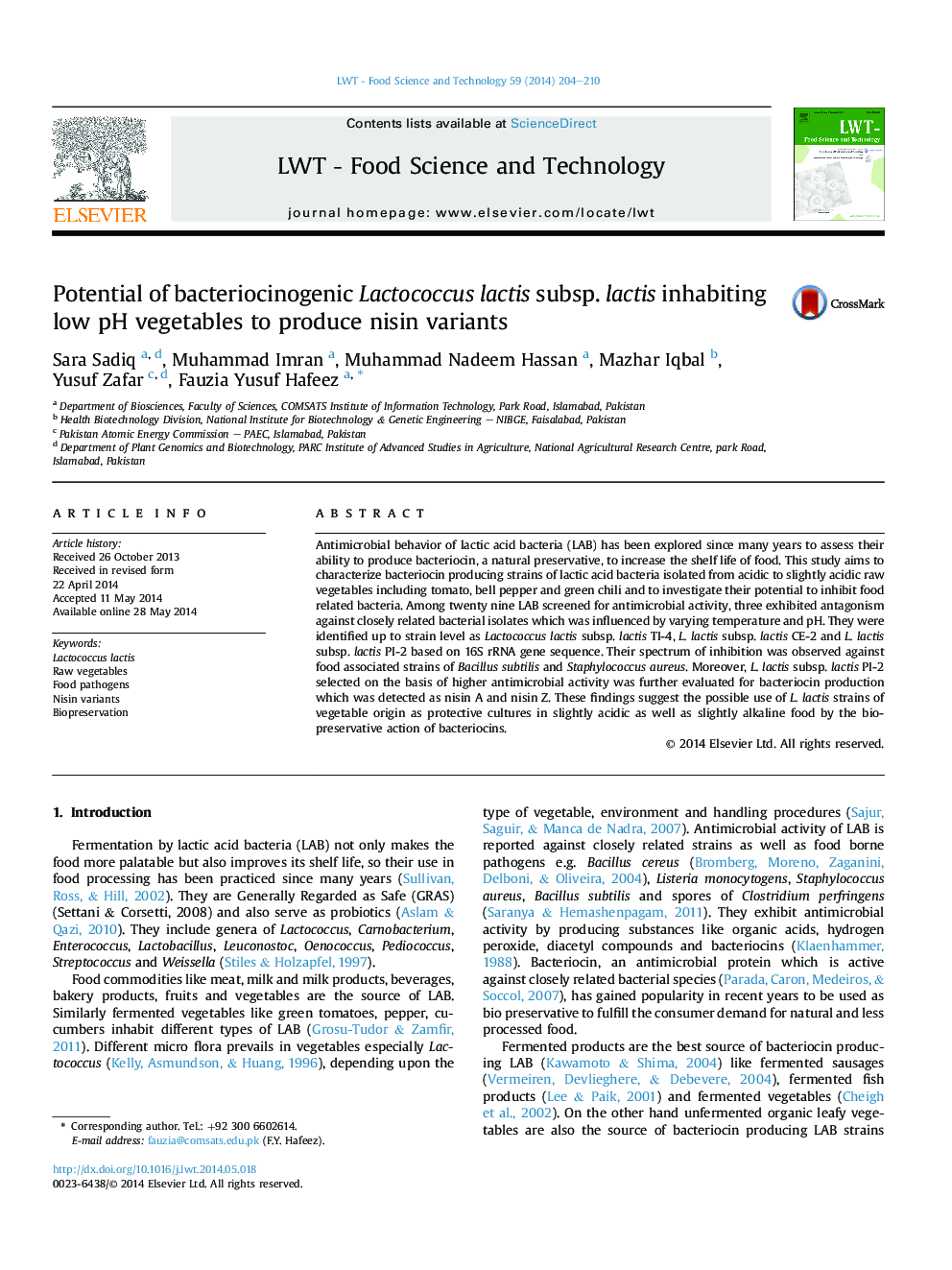| کد مقاله | کد نشریه | سال انتشار | مقاله انگلیسی | نسخه تمام متن |
|---|---|---|---|---|
| 6403535 | 1330896 | 2014 | 7 صفحه PDF | دانلود رایگان |
- First report of bacteriocin producing LAB in low or slightly low pH vegetables.
- LC-MS analysis: Both nisin variants (A & Z) by Lactococcus lactis inhabiting green chili.
- pH-dependent antagonism of LAB validated for slightly acidic/basic foods (pH 5-8).
- Broad spectrum: effective against food pathogens including Staphylococcus aureus and Bacillus subtilis.
- Low pH vegetable strains are potential protective cultures to control food-borne illness.
Antimicrobial behavior of lactic acid bacteria (LAB) has been explored since many years to assess their ability to produce bacteriocin, a natural preservative, to increase the shelf life of food. This study aims to characterize bacteriocin producing strains of lactic acid bacteria isolated from acidic to slightly acidic raw vegetables including tomato, bell pepper and green chili and to investigate their potential to inhibit food related bacteria. Among twenty nine LAB screened for antimicrobial activity, three exhibited antagonism against closely related bacterial isolates which was influenced by varying temperature and pH. They were identified up to strain level as Lactococcus lactis subsp. lactis TI-4, L. lactis subsp. lactis CE-2 and L. lactis subsp. lactis PI-2 based on 16S rRNA gene sequence. Their spectrum of inhibition was observed against food associated strains of Bacillus subtilis and Staphylococcus aureus. Moreover, L. lactis subsp. lactis PI-2 selected on the basis of higher antimicrobial activity was further evaluated for bacteriocin production which was detected as nisin A and nisin Z. These findings suggest the possible use of L. lactis strains of vegetable origin as protective cultures in slightly acidic as well as slightly alkaline food by the bio-preservative action of bacteriocins.
Journal: LWT - Food Science and Technology - Volume 59, Issue 1, November 2014, Pages 204-210
